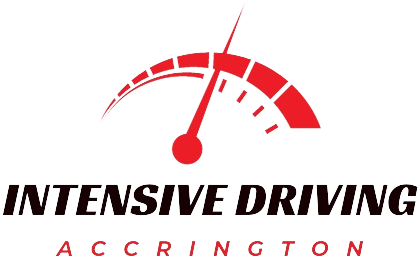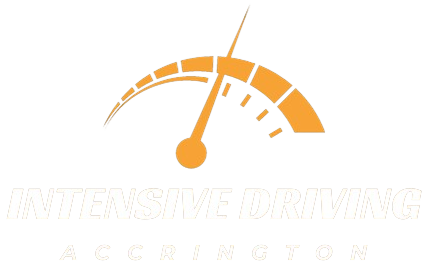The notion about taking the motorway driving lessons to enhance your capacity and trust on lightning-fast roads? Learning lane regulation, speed supervisors, merging, passing, and safe leading distances all require those ideas. By stressing defensive driving methods and mastering laws unique to motorways, they seek to foster confidence in driving who must navigate difficult traffic circumstances. In order to ensure safety, confidence, and fun behind the wheel, these classes educate drivers for the challenges of modern highways. These include basic understanding of motorway signage and accident procedures, as well as actual skills like negotiating relationships and ranging limitations on speed.
Driving instructors to help you master the motorway
Seeking guidance from experienced driving instructors can be invaluable when aiming to conquer motorway driving. These professionals specialize in equipping learners with the necessary skills and confidence to navigate high-speed roads safely. With personalized instruction, they focus on crucial aspects like lane discipline, merging, overtaking, and managing speed effectively. Moreover, driving instructors provide insights into handling complex traffic scenarios, such as interchanges and variable speed limits. Their expertise of security protocols and laws particular to motorways helps to be sure that students are ready for any situation they might come into while manual or automatic driving lessons or manual driving lessons in UK or other. Learning to drive on a motorway becomes practical with the help of professional teachers, enabling students to drive on these roads with trust and with ease.
Can learners drive on the motorway?
Yes, under specific conditions, novices are permitted to drive on highways, but it’s important to understand the rules that apply. For instance, in the UK, students who are driving a car equipped with dual controls and are joined by an authorised driving instructor in Blackburn or other are permitted to drive on the motorway. This guarantees the learner’s safety as well as the safety of other drivers by enabling the instructor to take over in a moment of need. However, motorway driving is not typically included in standard or manual and automatic driving lessons, so learners must specifically request motorway tuition. It’s an excellent opportunity for learners to gain valuable experience in handling high-speed roads under supervision, but it’s crucial to approach it with caution and proper guidance.
Can I get motorway lessons even if I’ve passed my test?
Absolutely! Even after passing the driving exam to drive, cutting motorway courses can be very helpful. These courses offer special instruction in high-speed road directions, which is not generally included in regular driving exams yet is essential for safe and confident driving. You can acquire useful skills including safe merging and overtaking maneuvers, optimum speed leadership, appropriate lane discipline, and how to manage intricate road conditions specific to motorways by enrollment in motorway training. These courses additionally give you the chance to brush up on your grasp of motorway signs and rules, which will serve to keep you informed and in compliance with the law. In the end, spending money on motorway lessons can greatly improve your driving abilities, increase confidence when operating a vehicle, and promote safer highway travel.
How can I stay safe while driving on the motorway?
Despite the reality that that drive on a highway can be scary, there are crucial safety and comfort steps you should take. Most all, always maintain a secure following distance behind the vehicle in front of you to give yourself enough time to react to any unwanted changes in the path of traffic or traffic signs. To keep aware of everything around you, check your mirrors frequently. When changing lanes or merging, give a loud signal. Unless you are ahead, stay in the left lane and always remember to check your blind areas before shifting course. Additionally, respect the speed limit displayed and modify your speed depending on traffic and meteorological circumstances. To counteract feeling fatigued, avoid distractions like eating or using your phone while driving. You should also take regular breaks. Finally, look out for other vehicles and be ready to make alterations.
Which lane should I be driving in?
Both novice and seasoned drivers often wonder, “Which lane should I be driving in?” Comprehending the appropriate use of lanes is crucial for secure and effective driving. Typically, one should use the left lane for passing and the right side for regular driving. It is preferable to remain in the right lane if you are not actively passing another car. As a result, traffic will proceed quicker and there will be little opportunity for collisions with cars going much faster. But if you have to pass a slower car, provide a signal, check in your blind spots and mirrors, and then shift into the next lane. After executing the pass, get back into the right lane. regardless of whatever lane you’re in, never forget to drive at a secure and pleasant speed within the established limits.
What’s the speed limit on a motorway?
The maximum allowed speed on a motorway—also commonly known as a motorway or a motorway in a number of places—generally adjustments based on the nation and its particular laws. In many locations, authorities generally set the average motorway speed limit between 60 and 70 miles per hour (mph) as well as between 100 and 120 kilometers per hour (km/h). It’s crucial to keep in mind though, that distinctive roads have distinct speed limits depending on a variety of factors, including weather, road conditions, and the existence of speed limitations because of construction or other dangers. To protect anyone on the road, particularly themselves, driving must be aware of and followed by the set limits of speed on bridges. Speeding beyond the permitted limit enhances the likelihood of errors, but it can also
How close should I be to the car in front?
Prioritizing protection and focus is crucial when working out how close you must keep your car from the one in front of you. As an overall guideline, abide with the “two-second rule.” Such requires that you keep a maximum of two-second disconnect between your vehicle and the one in ahead of you. This can be calculated by picking a set point on the road and calculating how long it takes your car to get there. there after the car in front of you passes there. To give yourself more time to react in the event of an emergency or sudden halt, you should extend this interval to three or even four seconds when driving at greater speeds or in bad weather. Recall that keeping a secure following
Motorway driving lessons near me
Seeking motorway driving lessons nearby? It’s a smart move to enhance your highway driving skills without venturing far. Local motorway driving lessons offer convenience and practicality, ensuring you learn in familiar surroundings. These lessons aim to master essential techniques like lane discipline, merging, overtaking, and maintaining safe distances. They are designed to increase confidence by responding to situations that you’ll face on roads, such as driving exchanges and learning signage and speed limits. By working with a local provider, you can get hands-on training near to home, which speeds up the learning process.
FAQS:
What are some key skills covered in motorway driving lessons?
Answer: Lane discipline, speed management, merging, overtaking, and safe following distances.
Can learners drive on the motorway, and under what conditions?
Answer: Yes, learners can drive on the motorway accompanied by an approved driving instructor and in a car fitted with dual controls.
Why, even after passing the driving exam, should drivers plan on taking motorway lessons?
Answer:
Standard driving exams usually do not include the specialized instruction offered by highway classes. The program aims to help participants navigate high-speed roads safely and confidently.
What are the most important rules of safety for highway driving?
Answer: Maintain a safe following distance, frequently check the mirrors, give an obvious signal while changing lanes, obey the speed rule, stay focused, and be ready to make adjustments to your driving.
What’s the general rule for determining the appropriate distance to maintain between your vehicle and the one in front ?Answer: Follow the “two-second rule” by keeping at least a two-second gap between your car and the vehicle ahead.


